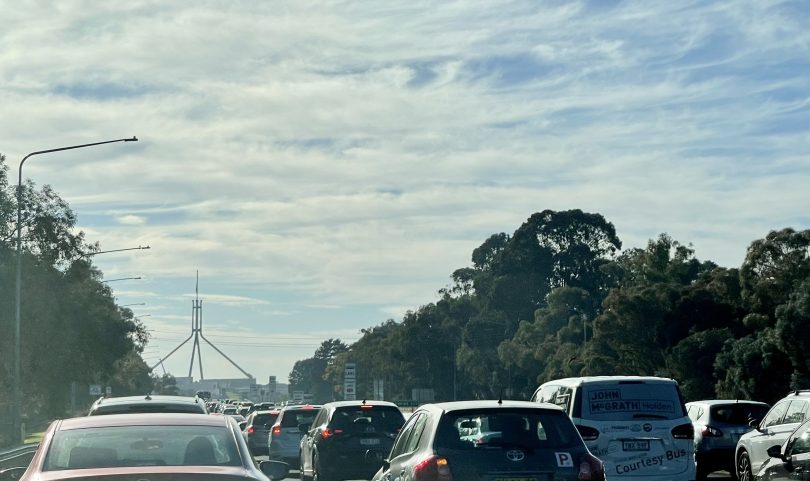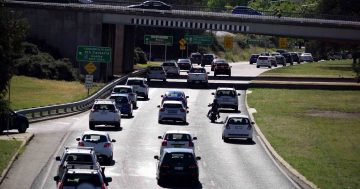
The ACT’s emissions rose slightly in 2021, driven by an increase in transport usage. Photo: Supplied.
The latest ACT emissions report shows it may prove a challenge for the Territory to meet its next emissions reduction target after transport use picked up again in the past financial year following an initial decline during the first COVID-19 lockdown.
According to the 2021-2022 Greenhouse Gas Emissions Inventory Report, although the Territory is on track overall to achieve its target of net-zero emissions by 2045, it could prove a challenge to achieve a 50-60 per cent cut on 1989-1990 emissions levels within four years.
The report said changes to zero-emissions vehicles and a transition away from natural gas may be needed to achieve the target.
“Achieving this can take time,” read the report. “Further, it is uncertain how the economic recovery following the COVID-19 pandemic will impact emissions.”
Emissions were down 45 per cent when compared to the 1989-1990 baseline in 2020-2021, but had risen slightly from 2019-2020 when emissions were down 47 per cent.
In 1989-1990, the ACT produced 3077 kilotonnes of carbon dioxide emissions.
In 2020-2021, the ACT produced 1685 kilotonnes despite its population have grown by 54 per cent.
The report attributed this to the bounce-back of transport emissions which rose five per cent between 2019-2020 and 2020-2021.
“Per capita transport energy use rebounded in 2020-2021 in line with increases in compressed natural gas, petrol and diesel use to almost reach levels from before the pandemic,” read the report.
Transport now comprises the largest portion (63.5 per cent) of the ACT’s total emissions.
The 2018-2019 inventory report said there was a “serious risk” the Territory’s emissions could rise after the switch to renewable power, driven by growing transport emissions.
2019-2020 was the first year the ACT had reduced its emissions below the baseline after the Territory offset 100 per cent of residual electricity emissions with renewable power.
Natural gas is the second-largest contributor to the ACT’s emissions. This comprises 22 per cent of all output, but levels remained flat between the two reporting periods.
This is followed by waste decomposition (10 per cent), industrial processes and product use (nine per cent), fugitive emissions from fuels (three per cent) and agriculture (one per cent).
The ACT’s second COVID-19 lockdown from August 2021 onwards was not included in the reporting period covered by this emissions outlook.
ACT Minister for Water, Energy and Emissions Reduction Shane Rattenbury said the report is proof the ACT’s overall trend is on the right track.
“The report also shows we still have many challenges ahead as we work towards a net-zero emissions future,” he said.
“Our climate actions this year reflect our commitment to reduce emissions from these sectors, some of which include continuing to support the uptake of active travel and electric vehicles to reduce transport emissions, and launching zero-interest loans for households to complete energy efficiency and gas-to-electric upgrades, or purchase an electric vehicle.”
To find out what you can do to help tackle climate change in the ACT, visit Everyday Climate Choices.
To read the 2021-2022 Greenhouse Gas Emissions Inventory Report, click here.

















